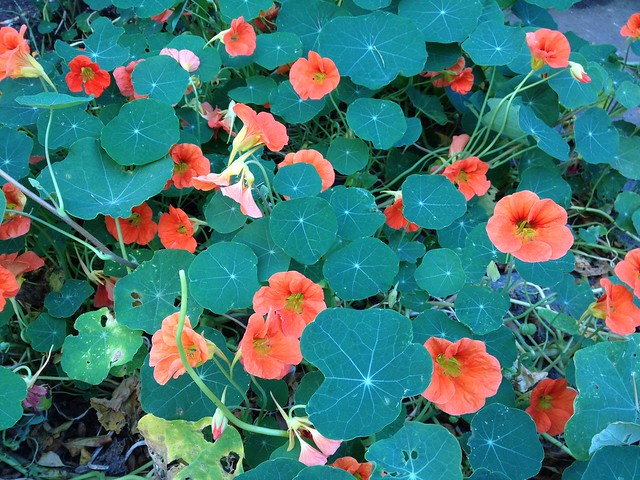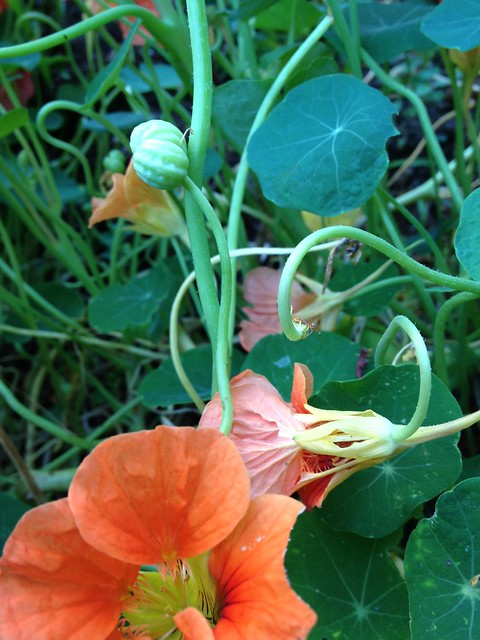Nasturtium "Capers"


In the Bay Area, and many other parts of the country, the nasturtium plant is ubiquitous. It grows quickly and easily in our climate, and produces beautiful flowers for much of the year. It also happens that every part of the plant is edible.
The flowers and leaves can be eaten raw (they have a nice peppery taste that goes will in salads), and they can also be stir-fried. For this recipe, however, I used the seed pods. Like the rest of the plant, they have a strong peppery taste, and when pickled, are pretty similar to capers. If you have a nasturtium plant growing on your property, you'll be able to make a pretty much unlimited supply of these things. They're great in salads, on sandwiches, or as a late addition to sauces that need a little extra bite. You can also eat them by themselves.
You want to pick the seed pods when they're still green and fresh. When they dry out, they become hard, bitter, and inedible. Generally, you want the ones that look like this:

If they've lost their green color, they're too old, and will taste awful.
Anyway, on to actually making them.
Nasturtium Capers
- 1 cup freshly-picked nasturtium seeds
- 1 cup white wine vinegar
- 1 large pinch dried thyme
- 1 bay leaf
- 1/2 teaspoon sugar
- 4-6 peppercorns
- 1 cup boiling hot water
- 1 1/2 tablespoon salt
Rinse and drain the nasturtium seeds to remove any dirt or bugs that might be clinging to them. Pour the seeds into a 1-pint jar, and cover them with a mixture of 1 cup boiling water, and 1 1/2 tablespoons salt.
Let them cure in the saltwater, covered and at room temperature, for 3 days.
After 3 days, drain and rinse the seed pods again, discarding the saltwater, and wash the jar. Return the seeds to the jar.
Bring the vinegar, sugar, thyme, pepper, and bay leaf to a boil in a small saucepan. Pour the hot mixture over the nasturtium seeds. Cover the jar, and allow it to come down to room temperature. Refrigerate the capers for 3 days before using. Refrigerated, they'll keep for several months.

